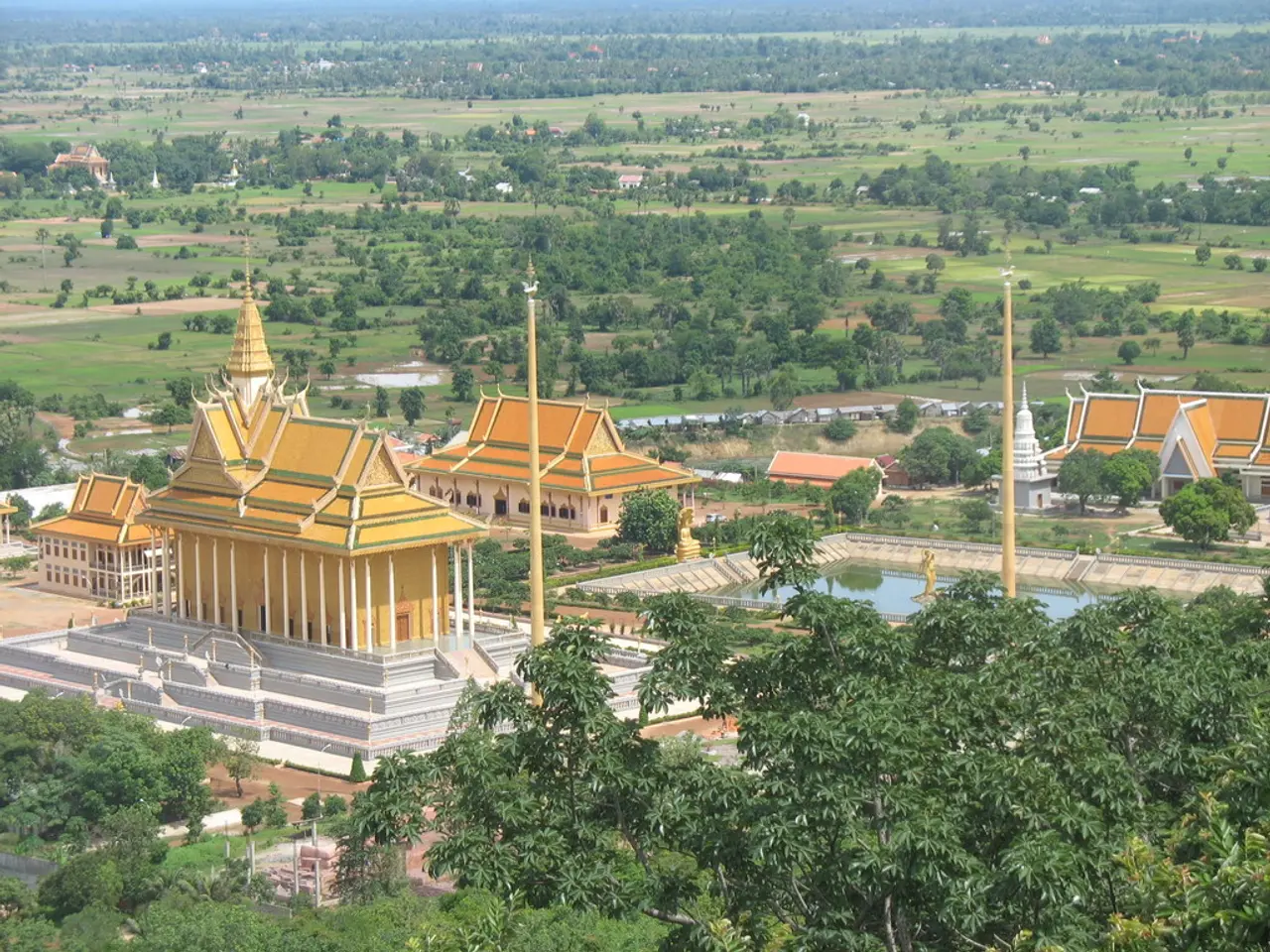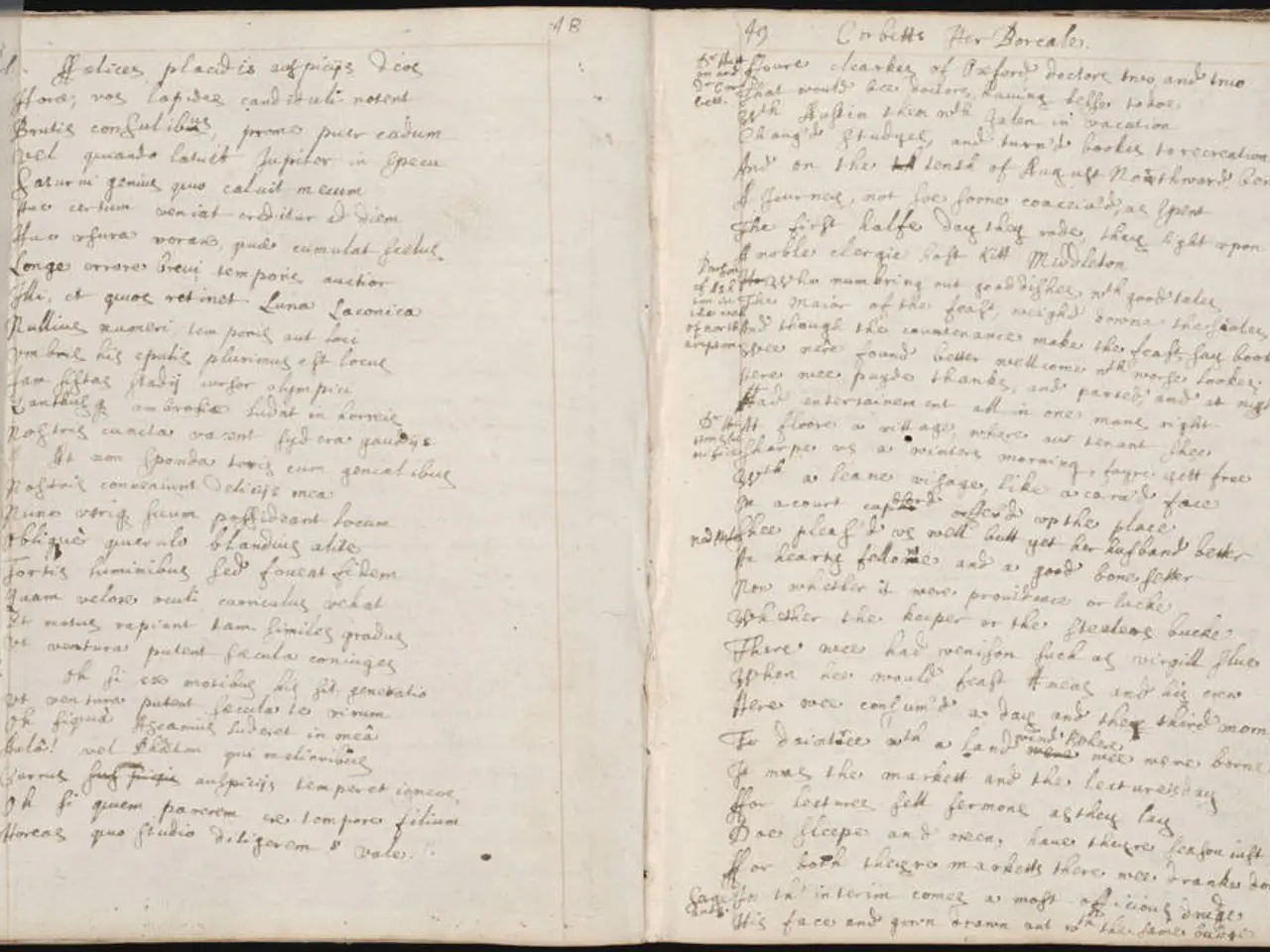Investigating the Possibility of Ancient Civilizations Existing Prior to the Ice Age
In the realm of archaeology, a fascinating hypothesis is gaining traction - the Black Sea Flood Hypothesis. This theory suggests that a catastrophic flood event, around 7,600 years ago, submerged prehistoric settlements and possibly early civilizations located on what was then dry land around the Black Sea's former shorelines[1].
According to this hypothesis, the Black Sea was once a smaller freshwater lake, surrounded by fertile plains and forested hills, around 8,000 years ago[2]. The flood transformed the Black Sea into a saltwater basin, a dramatic post-glacial sea-level change[3]. This event is believed to have been caused by rising sea levels after the last Ice Age, which allowed Mediterranean waters to breach the Bosporus Strait and flood the Black Sea[1].
Researchers have uncovered intriguing evidence supporting this theory. Marine geologists William Ryan and Walter Pitman, for instance, have mapped submerged landscapes along the Black Sea's former shoreline, documenting features that appear to show organized shapes and linear patterns[1]. These findings suggest the existence of human settlements before the flood.
One such site is Göbekli Tepe, located in southeastern Turkey. Constructed around 9600 BCE, this site features towering limestone pillars with animals, symbols, and abstract motifs, challenging the traditional view that complex societies only emerged after agriculture[4]. The possibility of advanced human cultures existing before the Ice Age would force a fundamental rethinking of our timeline.
The Black Sea flood may have had significant cultural and historical impact, potentially inspiring flood myths in the region. Hindu texts contain stories of a divine flood involving Manu, while the Epic of Gilgamesh, a Mesopotamian story, recounts a massive deluge[5]. Native American, Aboriginal Australian, and African oral traditions also include tales of fire, shaking earth, and rising seas[6].
However, direct archaeological evidence of specific early civilizations lost in this flood remains limited and a subject of ongoing research and debate. While the Black Sea Flood Hypothesis offers a compelling narrative, more research is needed to confirm its validity and uncover the secrets of the civilizations that may have been lost beneath the waves.
[1] Ryan, William F., and Walter Pitman. 1998. Noah's Flood: The New Archaeological Evidence of Man-Made Catastrophe. Simon and Schuster. [2] Zazooglu, Y. (2015). The Black Sea Flood: A Review. In The Black Sea Flood (pp. 1-14). Springer, Cham. [3] Ryan, William F., and Walter Pitman. 1998. Noah's Flood: The New Archaeological Evidence of Man-Made Catastrophe. Simon and Schuster. [4] Schmidt, Klaus. (2001). Göbekli Tepe: A Sanctuary of the Dead in the Heart of Anatolia. University of Chicago Press. [5] Ryan, William F., and Walter Pitman. 1998. Noah's Flood: The New Archaeological Evidence of Man-Made Catastrophe. Simon and Schuster. [6] Watson, Peter J., and Terence D'Altroy. 2010. The Cambridge World History of Food. Cambridge University Press.
- The Black Sea Flood Hypothesis, a theory suggesting a catastrophic flood submerged prehistoric settlements and potential early civilizations, is currently generating interest in the field of archaeology.
- The Black Sea, originally a smaller freshwater lake, was surrounded by fertile plains and forested hills about 8,000 years ago, but a flood transformed it into a saltwater basin due to a post-glacial sea-level change.
- This event is believed to have been a result of rising sea levels following the last Ice Age, with Mediterranean waters breaching the Bosporus Strait and flooding the Black Sea.
- Marine geologists William Ryan and Walter Pitman have provided supporting evidence, mapping submerged landscapes and discovering features that suggest organized human settlements before the flood.
- One such site is Göbekli Tepe in southeastern Turkey, a prehistoric complex with towering limestone pillars inscribed with animals, symbols, and abstract motifs, challenging traditional views on the emergence of complex societies.
- The cultural and historical impact of the Black Sea flood may have extended beyond the region, potentially inspiring flood myths in various societies, such as Hindu, Mesopotamian, Native American, Aboriginal Australian, and African cultures.
- Despite intriguing evidence, direct archaeological proof of specific lost civilizations remains limited, necessitating ongoing research and debate to confirm the validity of the Black Sea Flood Hypothesis.
- As excitement builds around the discoveries, archaeology, science, general news, lifestyle, and entertainment are all closely following updates on this compelling narrative.
- With implications such as pushing back the timeline of human civilization and a potential surge in investing in related research and education in fields like education-and-self-development, technology, business, environmental-science, medicine, and space-and-astronomy, the Black Sea Flood Hypothesis could significantly reshape our understanding of history and society.




